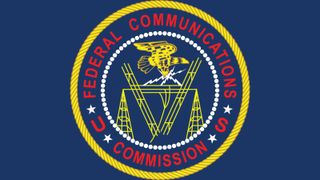Cable to FCC: PTC Should Not Derail Its Crucial Downlinks

Cable operators are telling the FCC that it should not allow a positive train control (PTC) system to use the C-band spectrum (3.7-4.2 GHz) until it resolves its proceeding on repurposing some of that spectrum and until Metrom Rail LLC demonstrates it will not interfere with the C-band downlinks cable operators and broadcasters use to receive network programming via satellite.
That came in joint comments by the American Cable Association and NCTA-The Internet & Television Association on Metrom Rail LLC's request for a waiver for ultrawideband operations in the band using higher-than-ordinarily-allowable power levels.
Related: ACA Says FCC Must Protect C-Band Incumbents
While they say they are all for train safety, an issue that drew a spotlight after some high-profile accidents along the Eastern Seaboard, ACA and NCTA say Metrom has not demonstrated that its system will not interfere with the thousands of earth stations trying to pick up "faint" signals from satellites 35,000 miles above the earth.
"NCTA’s and ACA’s members rely on C-band spectrum to deliver programming to 100 million American households, including 51.9 million cable video customers. Almost every national programming network and many regional networks are distributed using the 3.7-4.2 GHz downlink spectrum to send programming to earth station antennas at network operations centers and cable headends around the country, which then distribute programming on to customers," they told the FCC.
NCTA suggested it had enough trouble with trains just rolling down the track. It point to one NCTA member with a receive facility only 25 feet from a set of tracks. "Even the train traffic itself has a negative impact on the earth station antennas at the site due to the vibrations caused by the heavy loads and it is unclear how Metrom’s proposed operations might impact such sites.
The Metrom request is for initial operations in three areas, Boston, New York and Los Angeles, but it also talks about expanding it under certain conditions. NCTA and ACA have their own conditions for even considering allowing deployment of the system: "The Commission should proceed to consider Metrom’s request for waiver only after (1) Metrom submits detailed technical analysis demonstrating that its proposed operations will not cause harmful interference to C-band downlinks and (2) the Commission resolves its broader 3.7-4.2 GHz rulemaking," they said.
Broadcasting & Cable Newsletter
The smarter way to stay on top of broadcasting and cable industry. Sign up below
The FCC voted unanimously back in July to find ways to open up the C-band -- either all of the proposed 500 Mhz or some portion of it -- for terrestrial wireless use. Those ways could include an incentive or capacity auction, a market mechanism where incumbents voluntarily strike deals to reduce their footprint, or some other means.
Contributing editor John Eggerton has been an editor and/or writer on media regulation, legislation and policy for over four decades, including covering the FCC, FTC, Congress, the major media trade associations, and the federal courts. In addition to Multichannel News and Broadcasting + Cable, his work has appeared in Radio World, TV Technology, TV Fax, This Week in Consumer Electronics, Variety and the Encyclopedia Britannica.

